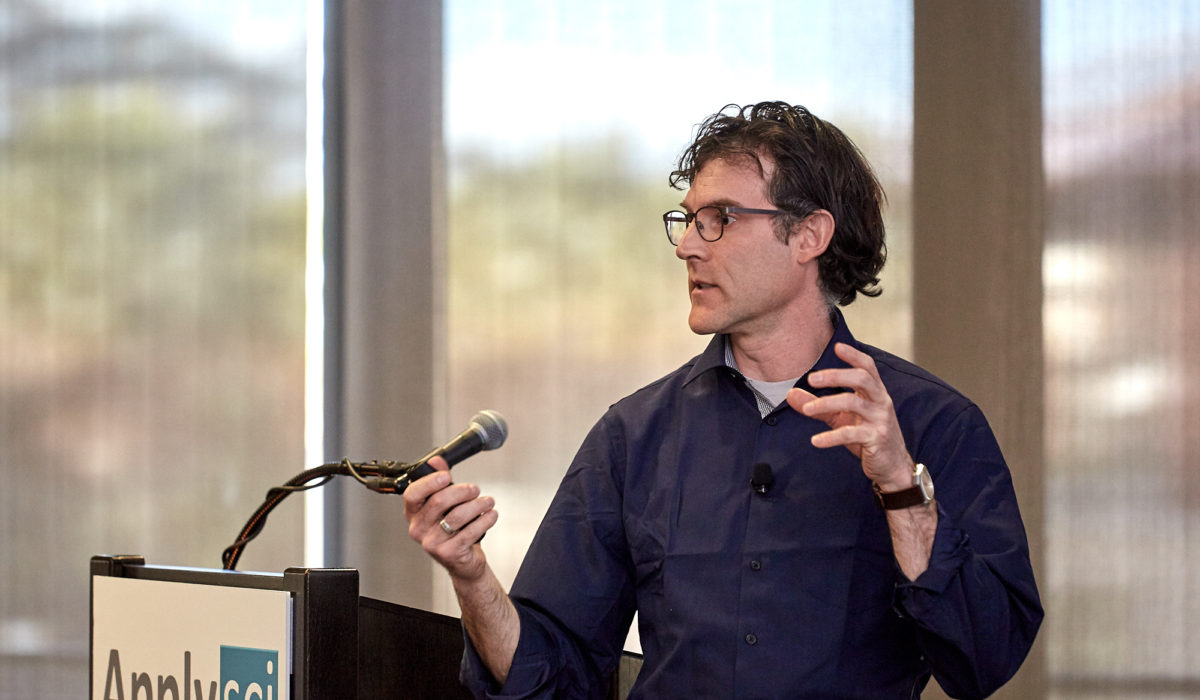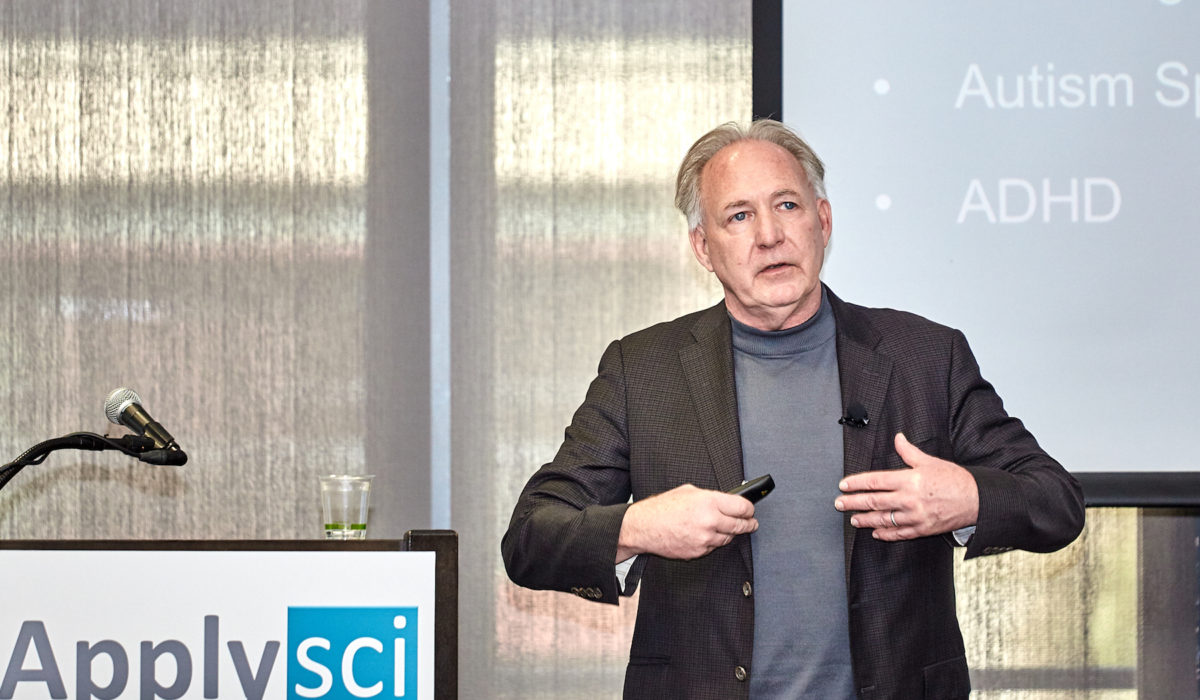MoBi, developed by John Foxeat the University of Rochester, combines VR, EEG, and motion capture sensors to study movement difficulties associated with neurological disorders. According to Foxe, “The MoBI system allows us to get people...
VR
VR-enhanced molecular simulations
University of Bristol researchers, Oracle and Interactive Scientific have used Oracle’s cloud infrastructure to combine real-time molecular simulations with VR, enabling them to “touch” molecules as they move— highlighting the potential of VR in...
David Axelrod: VR in healthcare & the Stanford Virtual Heart | ApplySci @ Stanford
David Axelrod discussed VR-based learning in healthcare, and the Stanford Virtual Heart, at ApplySci’s recent Wearable Tech + Digital Health + Neurotech conference at Stanford;
Walter Greenleaf on medical applications of VR and AR | ApplySci @ Stanford
Walter Greenleaf discussed medical applications of VR and AR technology at ApplySci’s Wearable Tech + Digital Health + Neurotech Silcon Valleyconference at Stanford University on February 26-27, 2018:
Headset-free mixed reality
Disney Research’s Magic Bench is a mixed-reality technology that lets multiple users interact with animated characters, with out headsets or handheld devices. When seated on the Magic Bench, one sees a mirrored image on...
VR studied for PTSD, phobia treatment
Emory’s Jessica Maples-Keller has published a study demonstrating the effectiveness of VR in treating PTSD, phobias, and other mental illnesses. She describes the treatment as allowing “providers to create computer-generated environments in a controlled setting, which...
VR training to reduce falls in Parkinson’s, dementia
Tel Aviv University’s Jeff Hausdorff has created a virtual reality treadmill system in an attempt to prevent falls in Parkinson’s and dementia patients. Current interventions focus on improving muscle strength, balance and gait. By integrating motor planning,...






